How Do Fossils Form?
Learn from the Smithsonian’s curator of vertebrate paleontology Anna K. Behrensmeyer, a pioneer in the study of how organic remains become fossils
/https://tf-cmsv2-smithsonianmag-media.s3.amazonaws.com/filer/03/28/0328dd7d-06f1-48b5-89e4-f7b62391058a/nhb2017-01944.jpg)
This is the third in a five-part series written by experts featured in the Smithsonian's new Hall of Fossils—Deep Time exhibition opening June 8 at the National Museum of Natural History. The full series can be found by visiting our Deep Time Special Report.
Contrary to popular belief, becoming a fossil can be easy instead of hard, and fossils can be abundant instead of rare. It all depends on what an organism is made of, where it lives and dies, and what happens next in the dust-to-dust process—preservation or natural recycling.
A healthy dose of chance is thrown in when it comes to making it from the living world to the fossil record. As a colleague of mine once said, “Life after death is risky.” For the long haul—surviving for millions of years and ending up in a museum exhibition—we usually think that plant and animal remains need to be petrified, or rather, infused with minerals that make them rock-hard and durable for the ages.
But—and this is a surprise to most people—sometimes dead parts don’t need to be changed into stone to last nearly forever. When the dead and buried don’t petrify, there are other ways that save them from destruction and preserve parts of their bodies with little change over vast spans of geological time.
We are still discovering new twists and turns on the road to successful fossil preservation. Take plants, for example. As everyone knows, plants are made up of soft, easy-to-destroy materials. Petrified wood is a familiar example of fossilization—pieces of tree trunks turn into super-hard rocks, but still retain growth rings and even cell structures of the once-living tree. How does this happen?
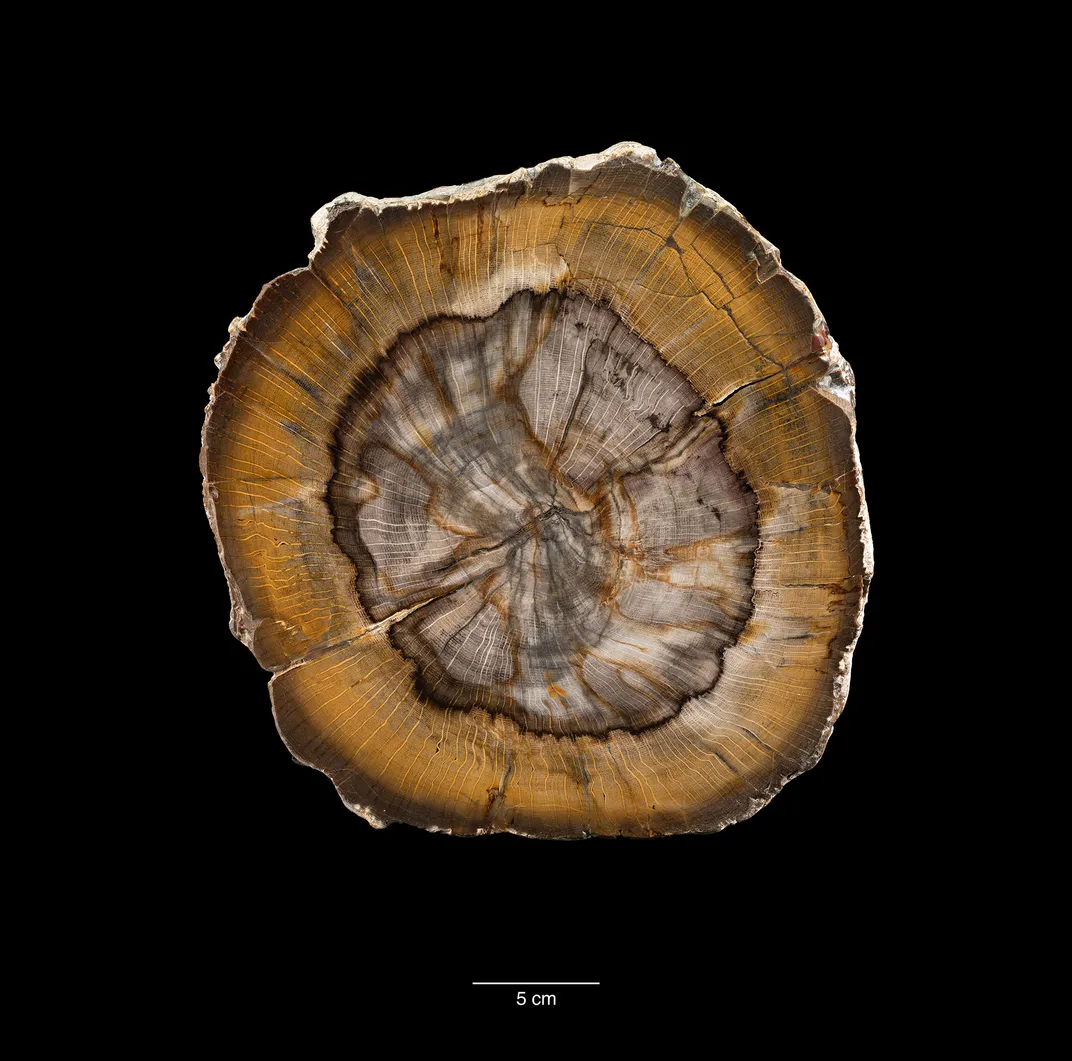
Experiments have shown that when a tree is buried in wet sediment with lots of dissolved silica, water slowly carries the silica into tiny spaces in the wood until the wood is changed to rock. But it doesn’t totally change, because some of the original organic parts are still trapped in there, helping to preserve the microscopic structure of the tree. Elements such as iron and manganese that come in with the water can color the silica, making beautiful patterns of red, brown and black, but sometimes this destroys the details of the woody structure.
Another fine example of incomplete fossilization can be found in the new “Fossil Hall—Deep Time” exhibition at the Smithsonian’s National Museum of Natural History. It is a piece of wood that has silicified on the outside but has the original, fibrous wood on the inside. This amazing fossil is 14 million years old. The outside of the buried log was sealed by silica before the inside was affected, preserving the original wood in a decomposition-free “rock box” for the ages. Incredibly, if you rubbed your finger across the grain of the inner wood, you could get a splinter, just like with modern lumber.
Humans and many other organisms have skeletons that are already mineralized, so when it comes to fossilization that gives us bony animals a built-in advantage over plants, jellyfish and mushrooms—to name a few of our soft-bodied, easily recycled fellow Earthlings. Think of all of the shells you have seen on the beach, the rocky coral reefs, the white chalk cliffs of Dover in England. These are all formed of biominerals—meaning that organisms built them while they were alive, usually for strength and protection, and then left them behind when they died. These examples are all made of calcium carbonate—note that they contain carbon—and their billions of skeletons were responsible for removing vast amounts of carbon from the atmosphere in times past.
Dinosaur skeletons may get all the glory, but the most common fossils on Earth are the tiny skeletons of micro-organisms that live in the water. Untold numbers can be found in the uplifted and exposed ancient rocks that can now be found on land or are still buried deep under the oceans.
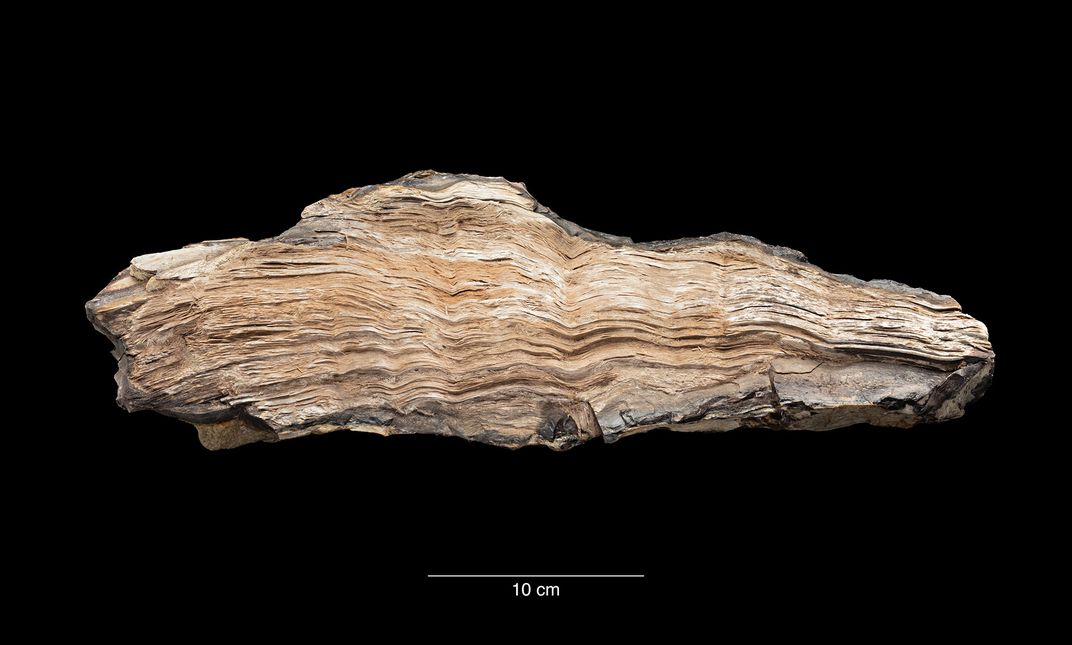
Micro-skeletons rain down to form new sediment layers on the ocean floor today, just as they have for millions of years. Acidic water, or even just cold water, can dissolve the tiny carbonate skeletons before they hit bottom. After burial, the minute shells may recrystallize or dissolve unless they are protected by mud that blocks the flow of water, and the ones that survive as fossils are highly valuable to paleontologists because of their unaltered biominerals. This is a different process from what happens with petrified wood, which is mostly turned to stone. In fact, for marine microfossils, it is better if they change as little as possible, because these little skeletons tell us what the Earth’s climate was like when they were alive.
We know that many buried micro-shells are pristine, meaning that their biominerals remained unchanged over millions of years, so geochemists can use them to reconstruct water chemistry and global temperature at the time when the micro-organisms died.
A whole lot of careful science has gone into chemical tests that show which tiny shells are unchanged and therefore okay for inferring past climate, and which are not. Though we call them fossils because they are old and buried deeply in rock, many of these micro-skeletons were not changed when they were preserved underground. Instead, they were encased within muddy sediment, which was turned into stone around them. The tiny inside hollow parts of the shells are filled with mud as well, keeping them from being crushed by the heavy rock layers that seal their graves.
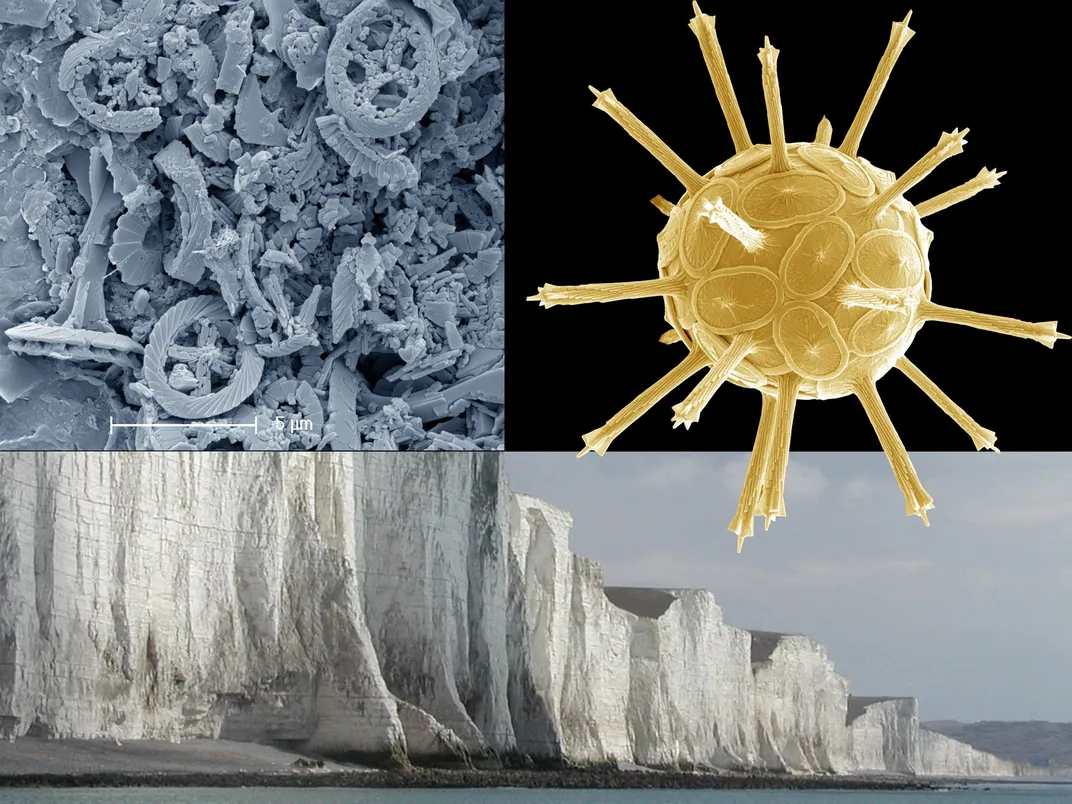
Most of the time bony skeletons and tree parts don’t have a chance to become fossilized because so many other organisms race to consume their nutrients right after they die.
A friend of mine once said, rather ominously: “You are never so alive as when you are dead.” And it’s so true. Microbes, as well as insects, quickly infest dead animals and plants, and we humans consider this quite disgusting.
But these decomposers just want the tasty packages of dead tissues and biominerals all to themselves. That is why carcasses begin to smell bad soon after the animals die—microbes create noxious chemicals that discourage larger beings from stealing their food. The same goes for plants. Fruit and vegetables soon decay because mold and bacteria know how to turn away other potential consumers. When we throw a rotten tomato away in the trash—or preferably on the compost heap—that lets the microbes do their thing—grow and reproduce and continue perpetuating their own species.
Whatever escapes the powerful, and often smelly, forces of ecological recycling has a chance to become part of the fossil record. The bones of our favorite fossil beasts in the Deep Time Hall were turned to stone by the addition of minerals in their pore spaces, but (as with petrified wood), some of the original biominerals are usually still there too. When you touch the real humerus (forelimb bone) of a Brachiosaurus in the new exhibition, you are connecting with some of the biominerals from that giant sauropod’s original leg bone that stomped the ground 140 million years ago.
How plant leaves, pollen and insects become fossils is more like what happens to marine micro-organisms. They must be quickly buried in sediment that then turns into hard rock and protects their delicate structures. Sometimes a fossil leaf is so well preserved that it can literally be peeled off the rock, looking like something from your backyard, even though it was alive millions of years ago in a long-lost forest.
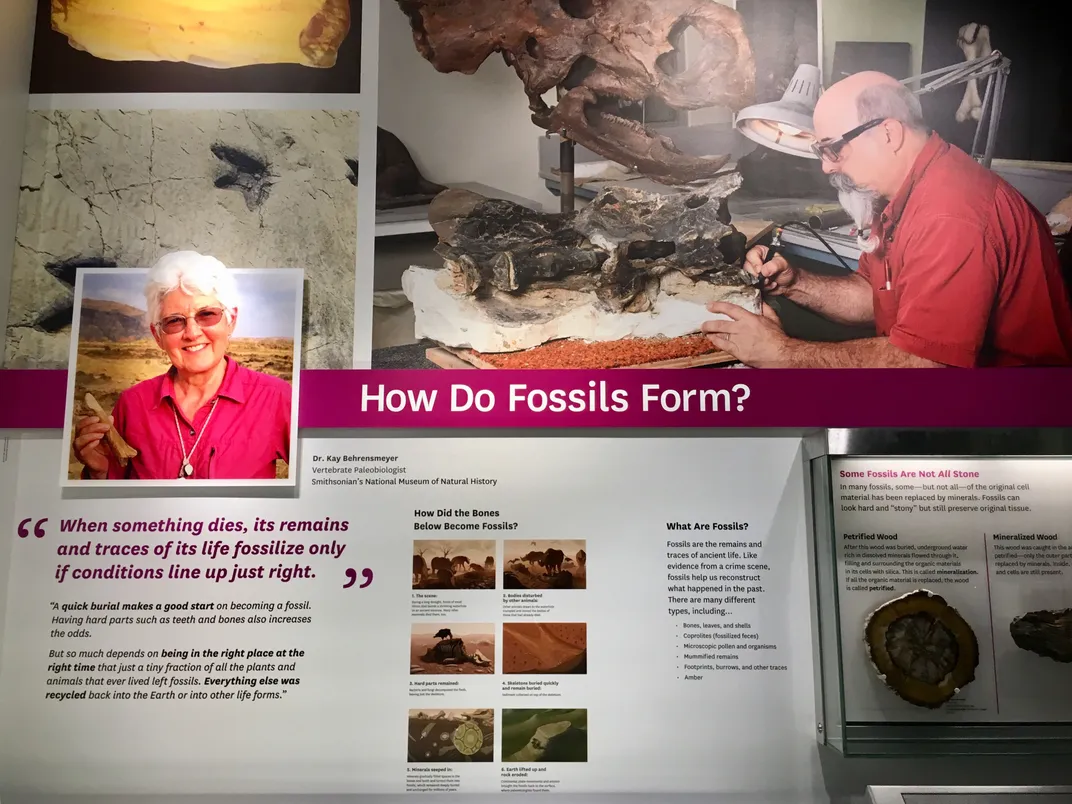
So, the bottom line on transforming animal and plant parts into fossils is that sometimes this means a lot of change and sometimes not so much at all. It’s fine to be petrified, but being encased in impenetrable rock, tar or amber works too, and that may even preserve pieces of ancient DNA as well.
It’s lucky for us that there are multiple ways for fossils to form, because this means more messengers from the past. Fossils tell us different stories about ancient life on Earth —not only who the animals and plants were, and where they lived, but how they were preserved as the lucky survivors from Deep Time.
/https://tf-cmsv2-smithsonianmag-media.s3.amazonaws.com/accounts/headshot/Behrensmeyer_2016_J_Clark_Smaller.jpg)
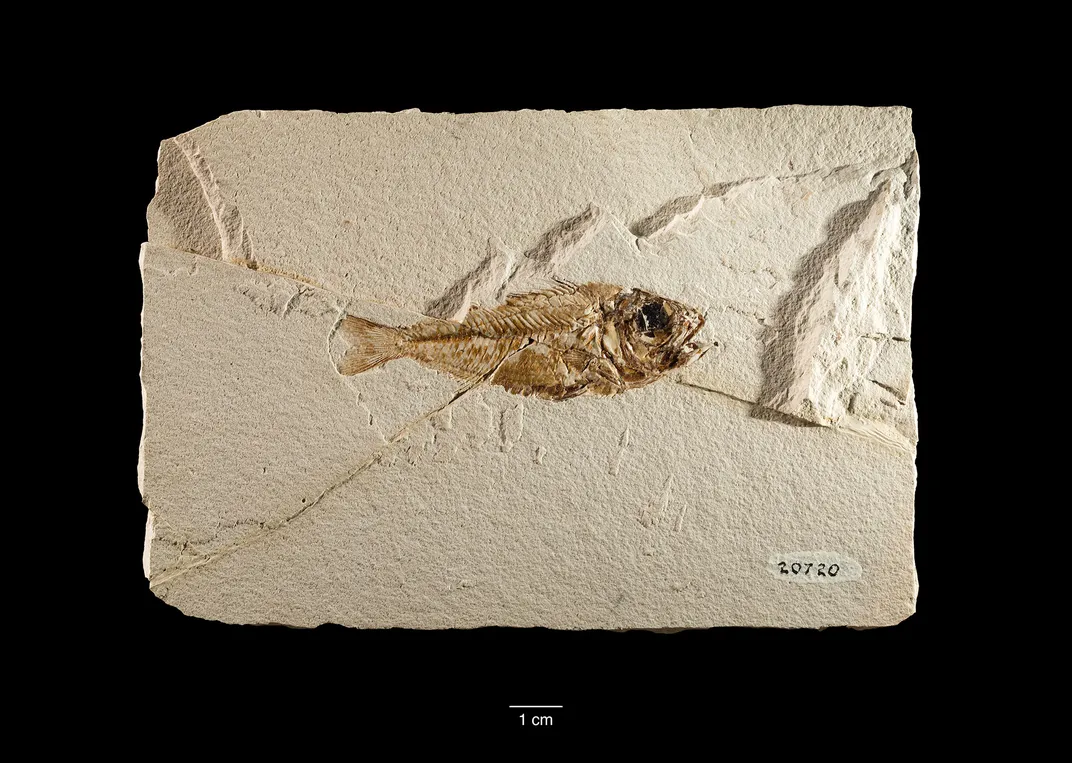
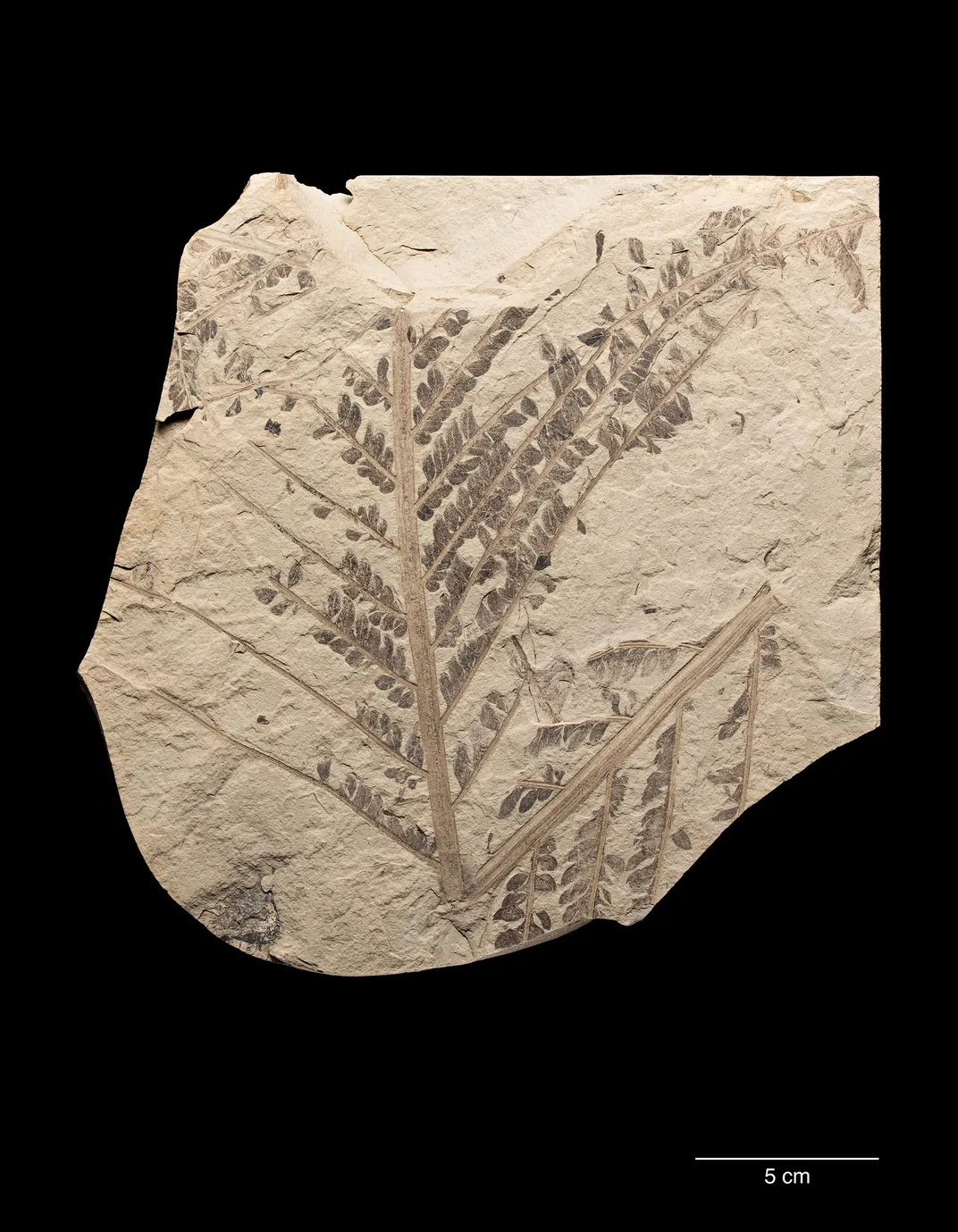
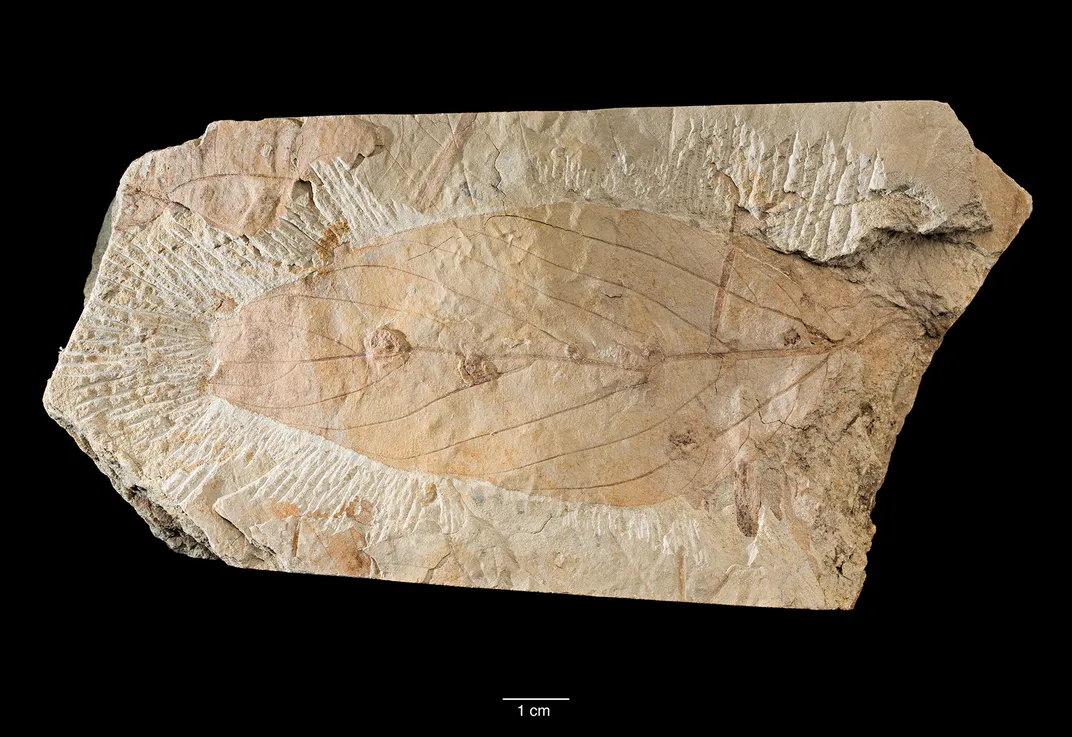
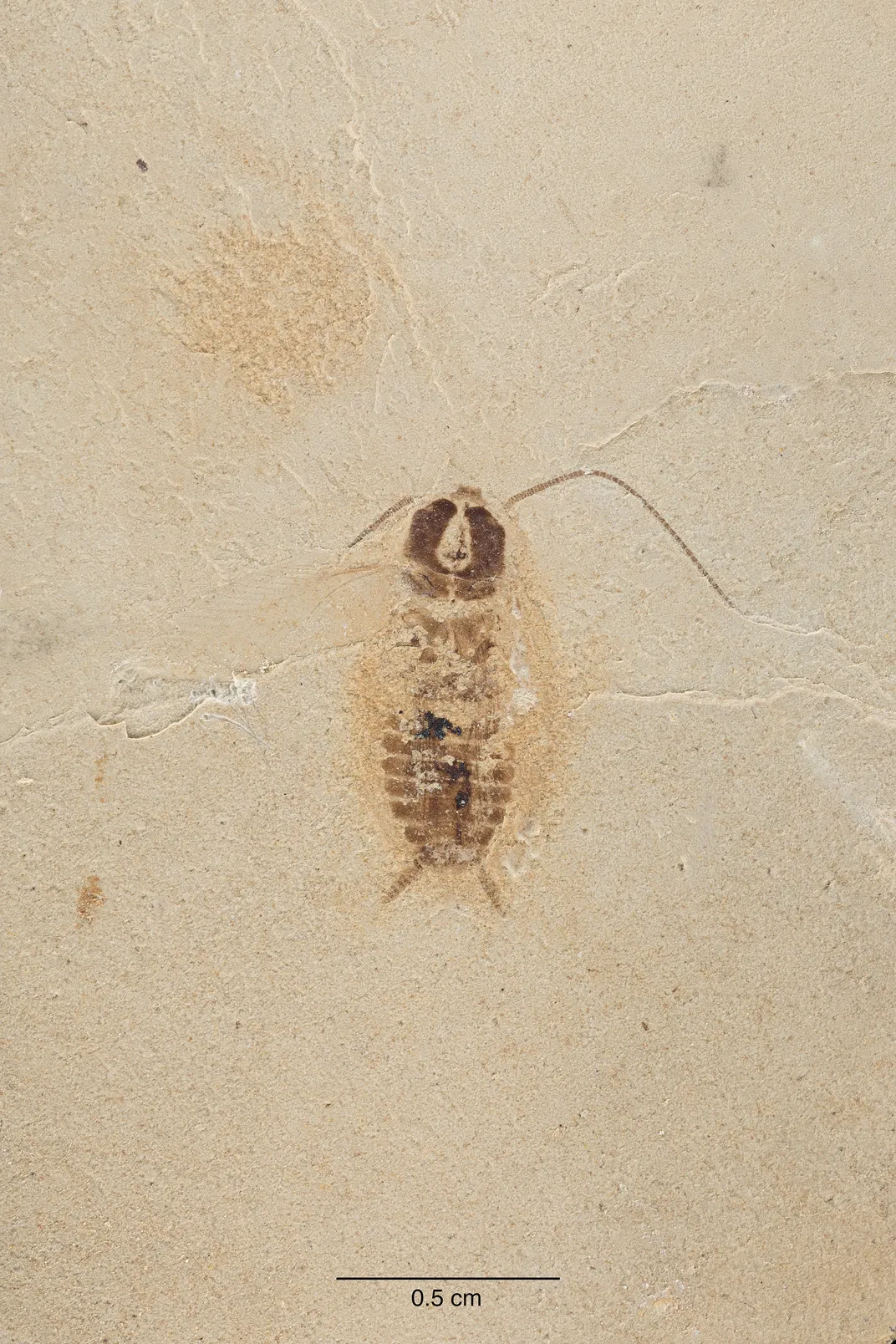
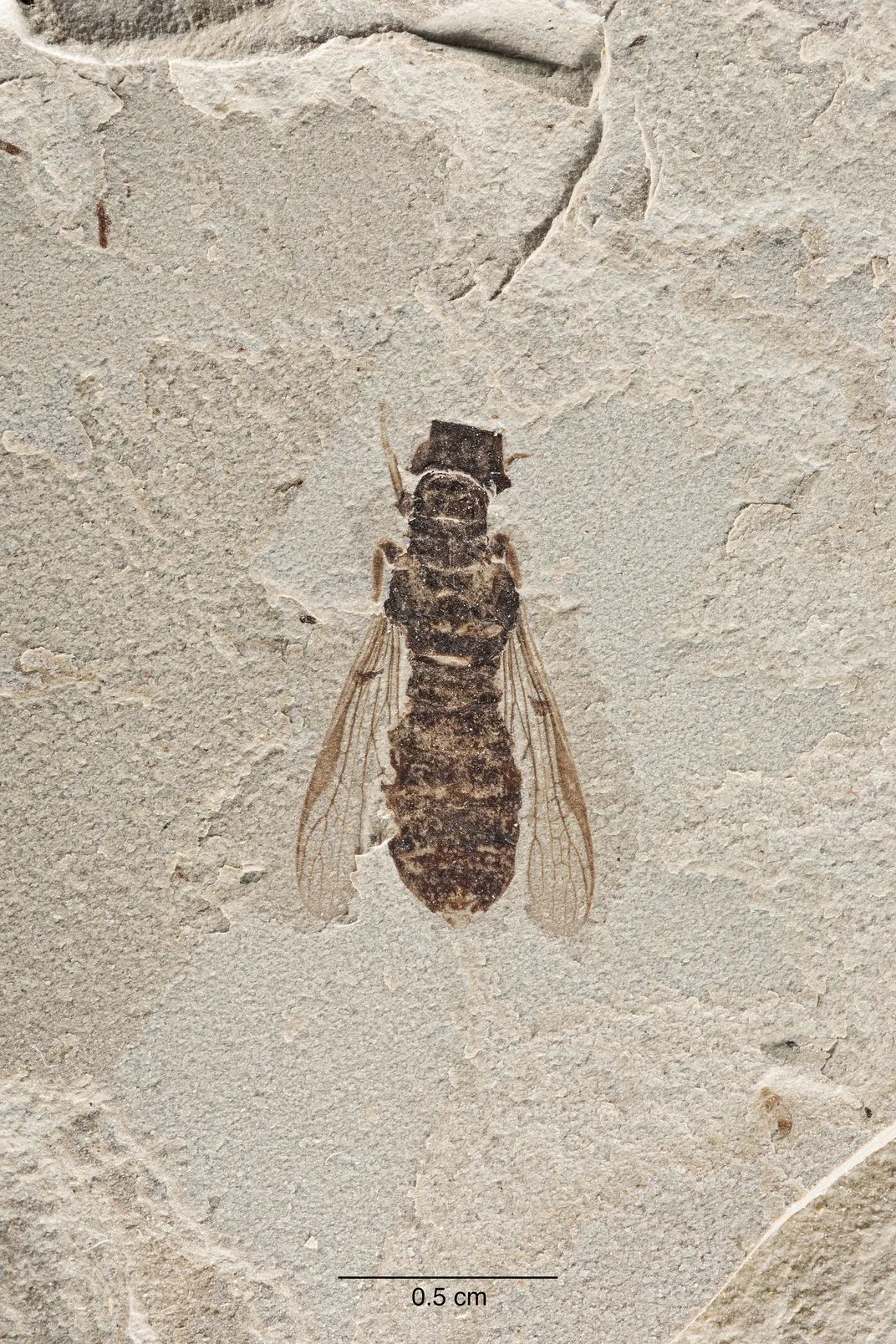
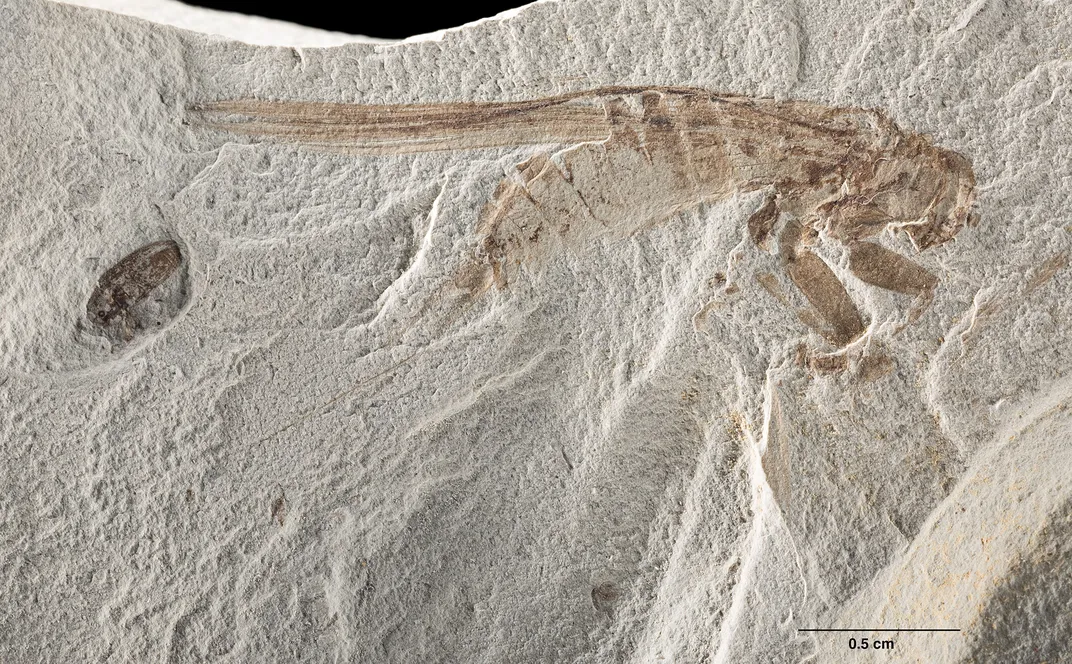
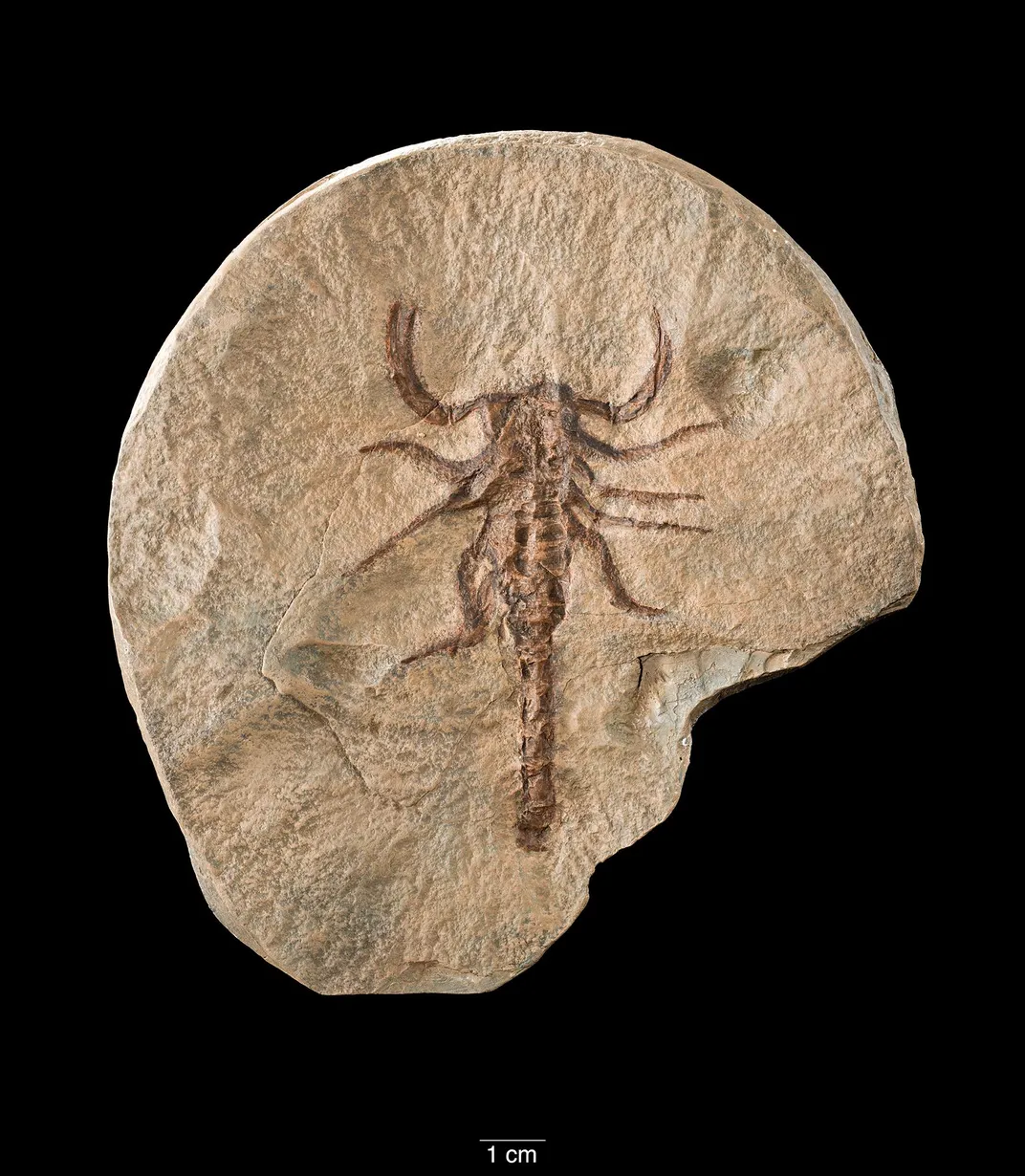
/https://tf-cmsv2-smithsonianmag-media.s3.amazonaws.com/accounts/headshot/Behrensmeyer_2016_J_Clark_Smaller.jpg)